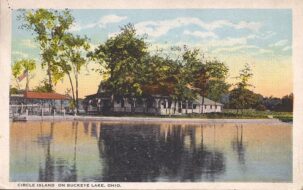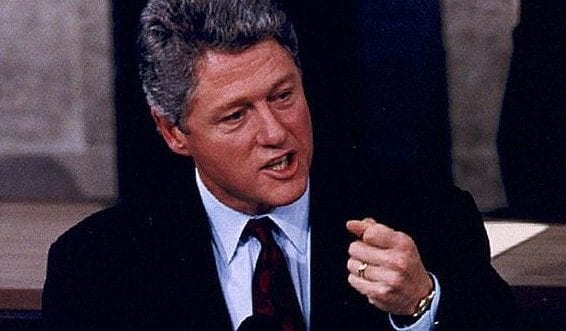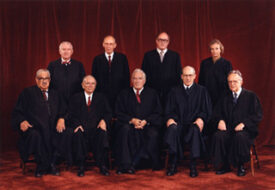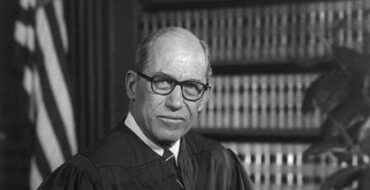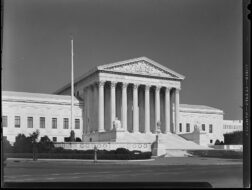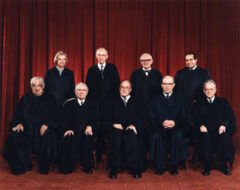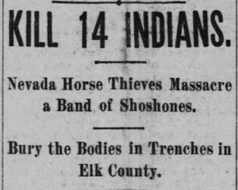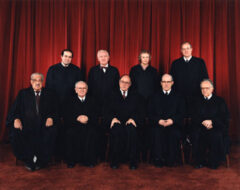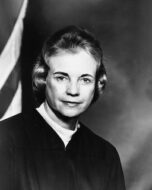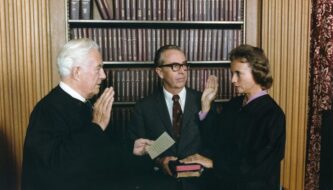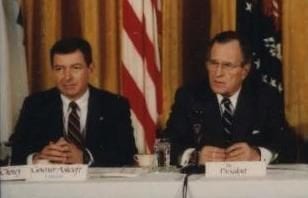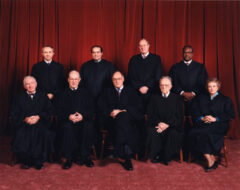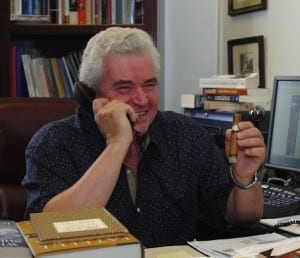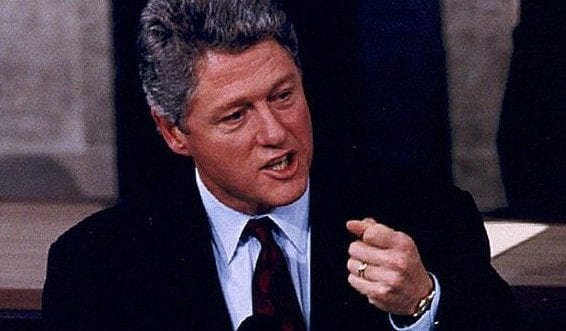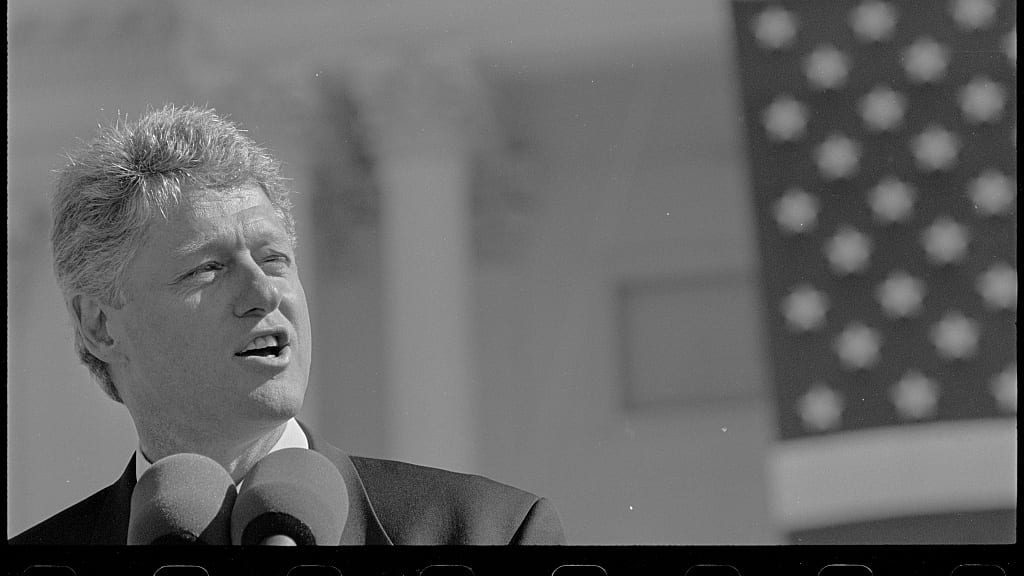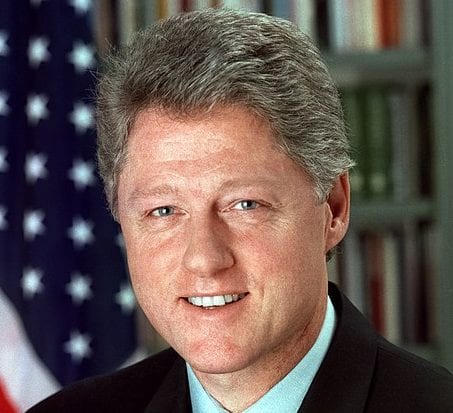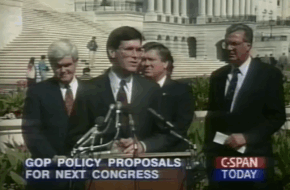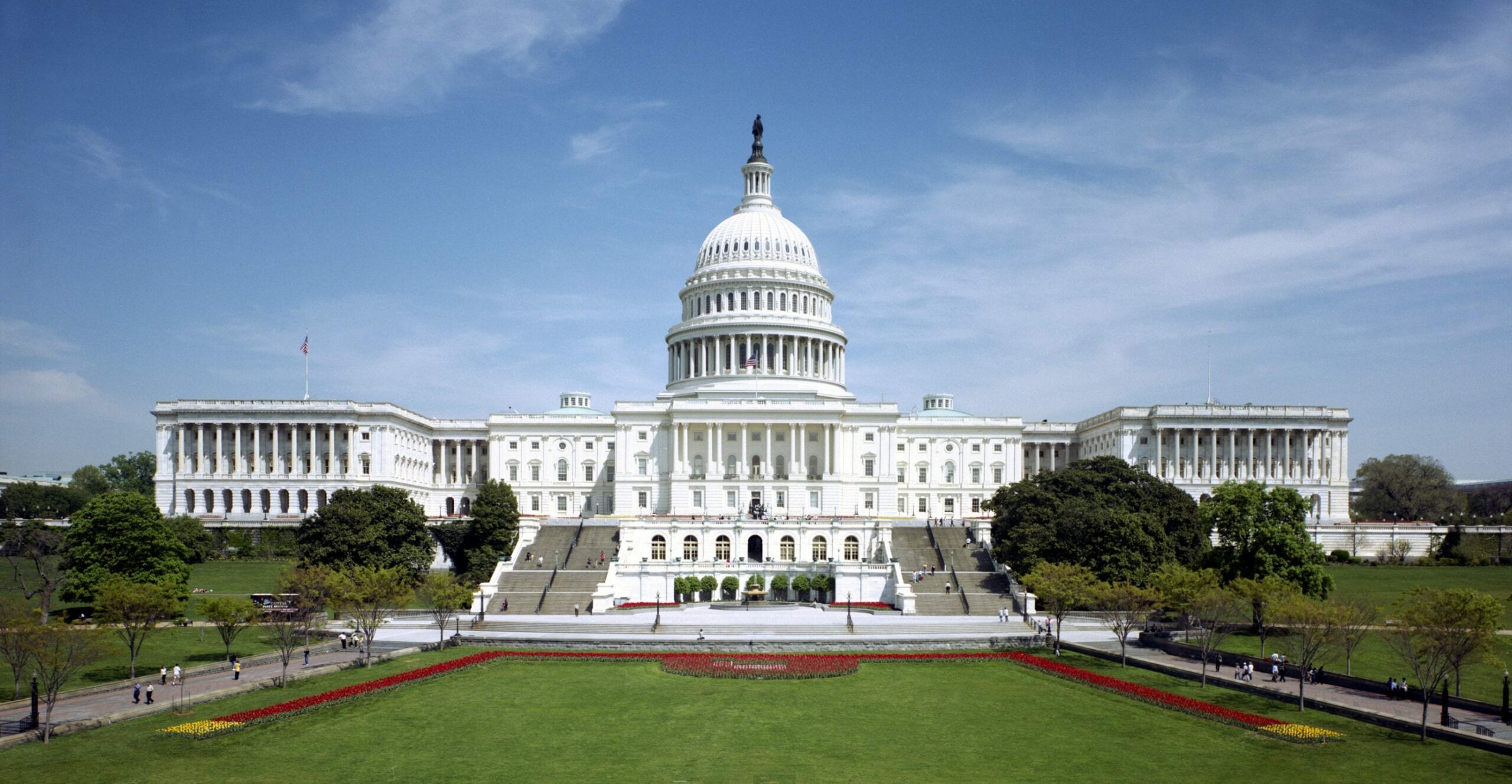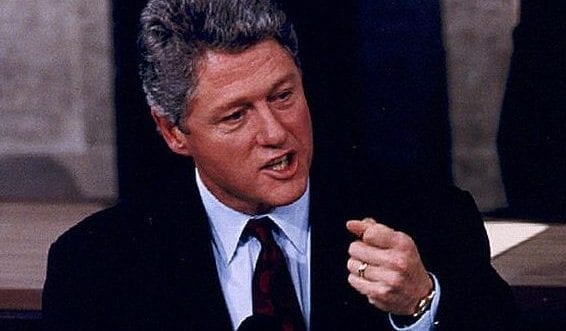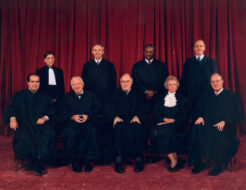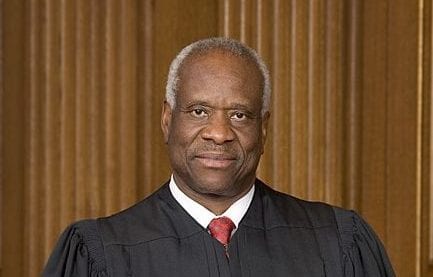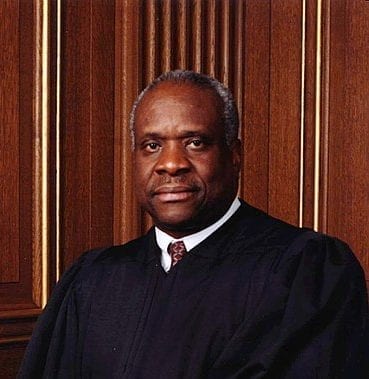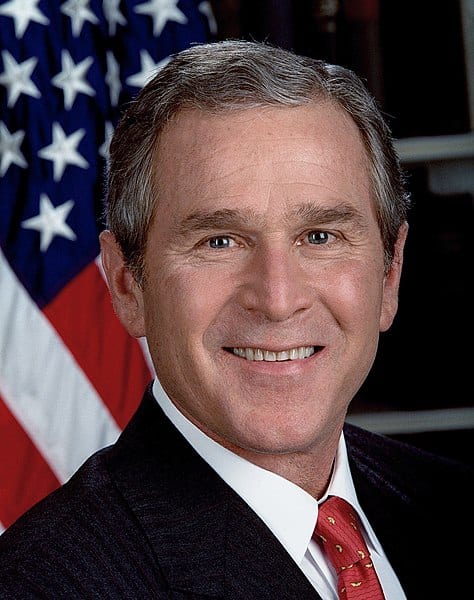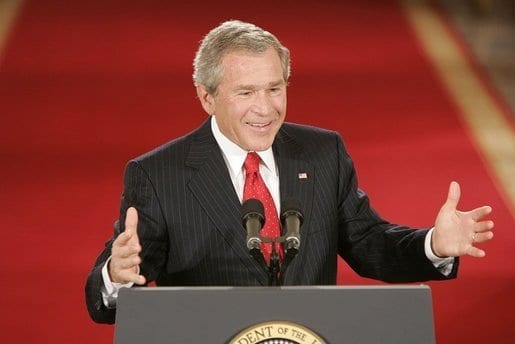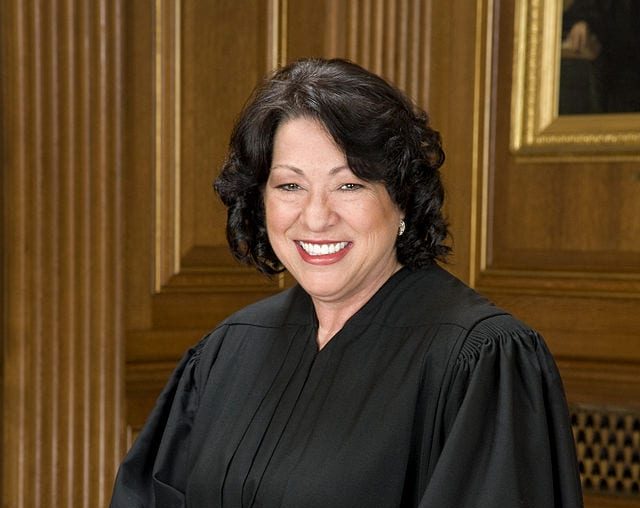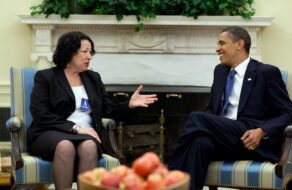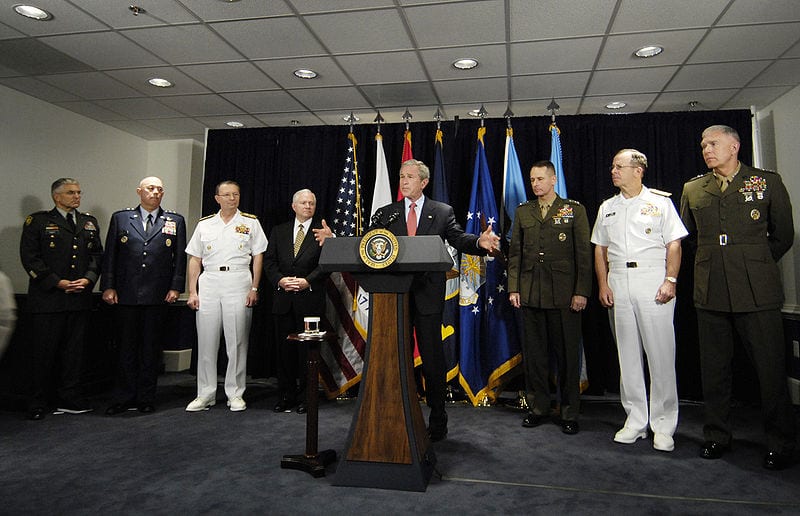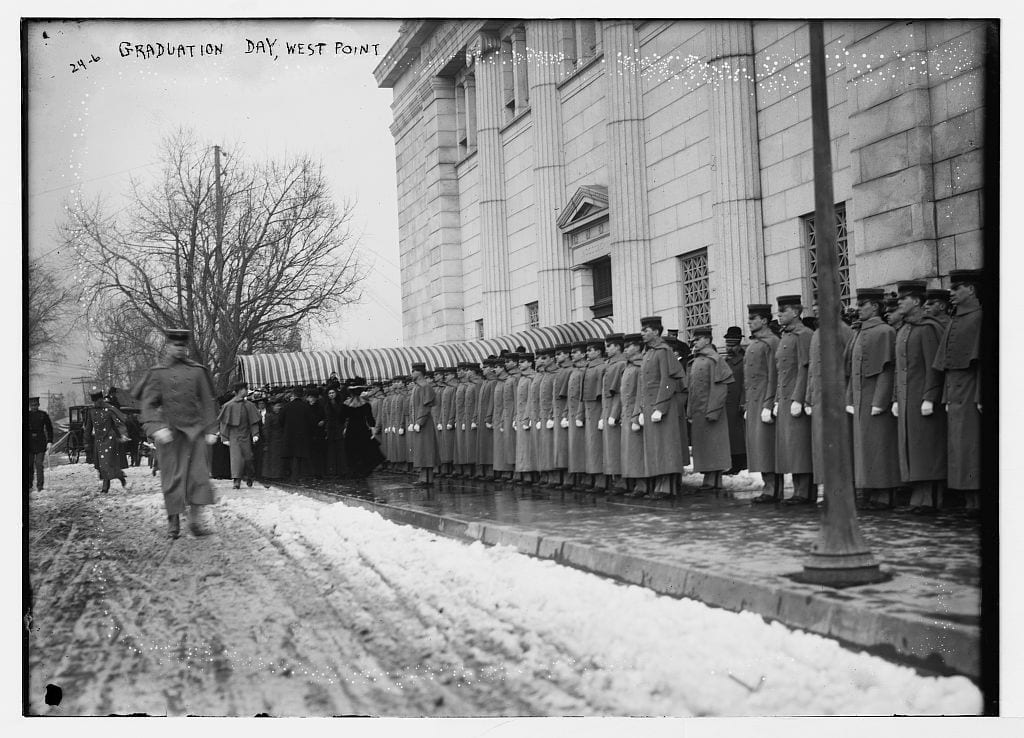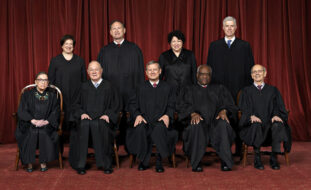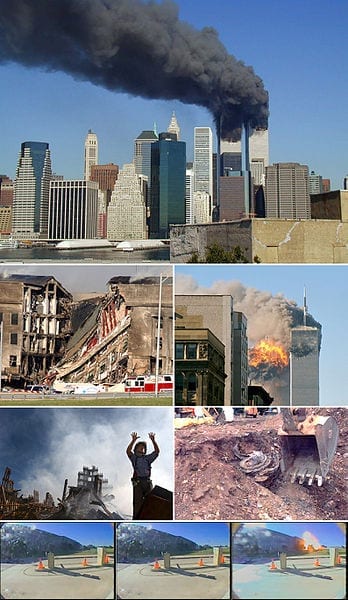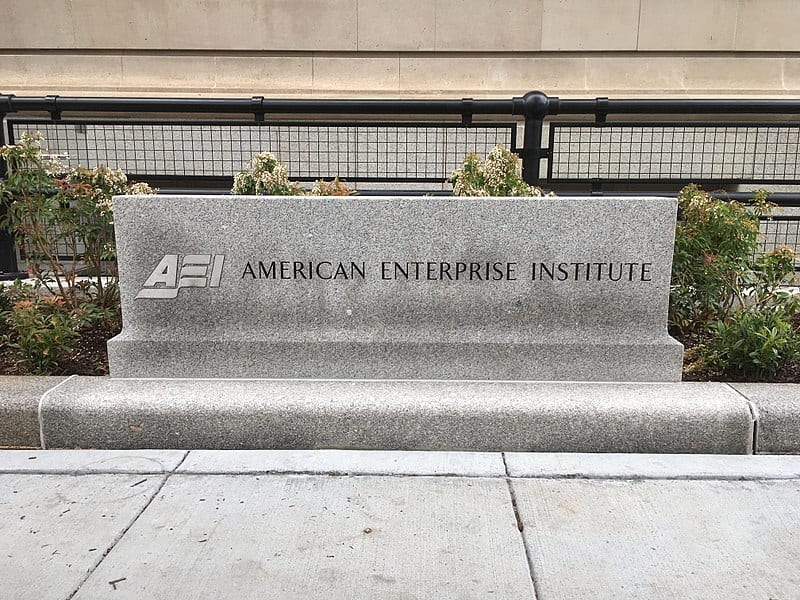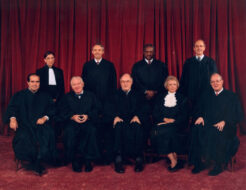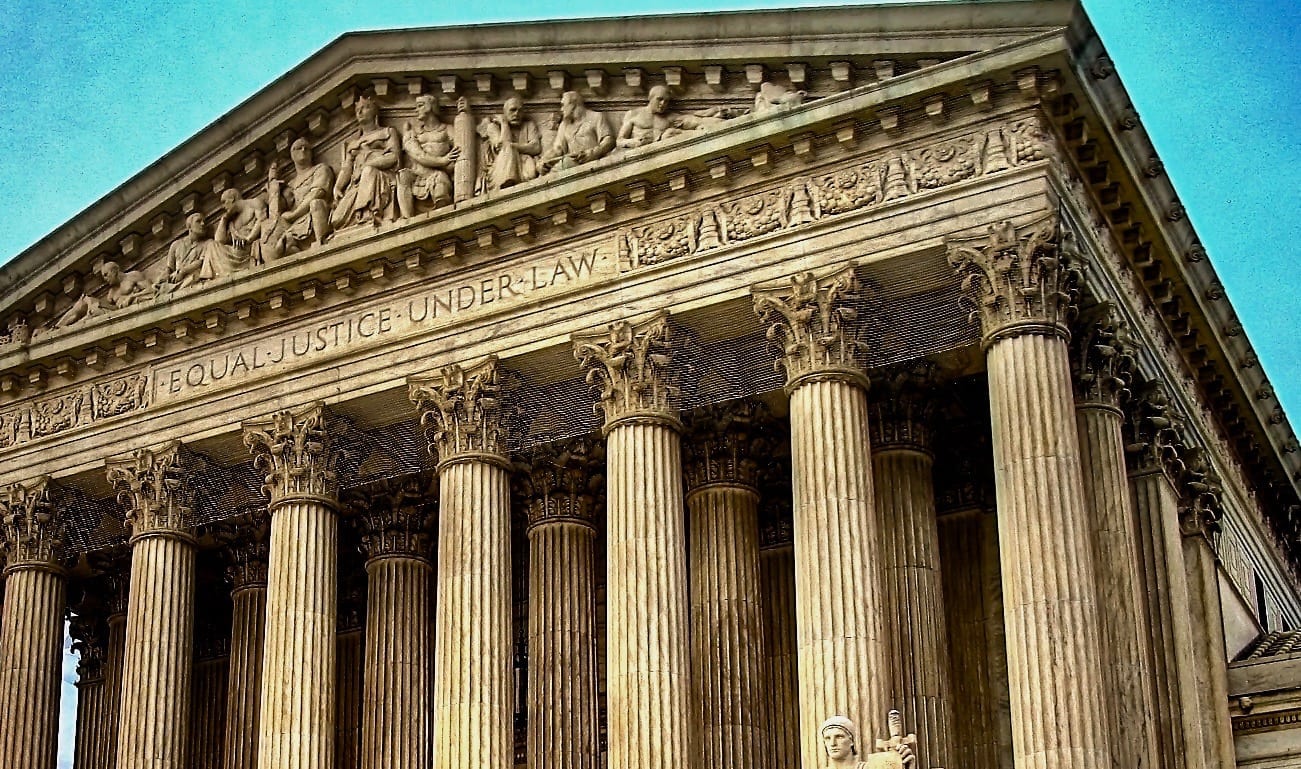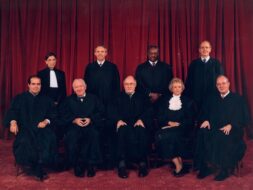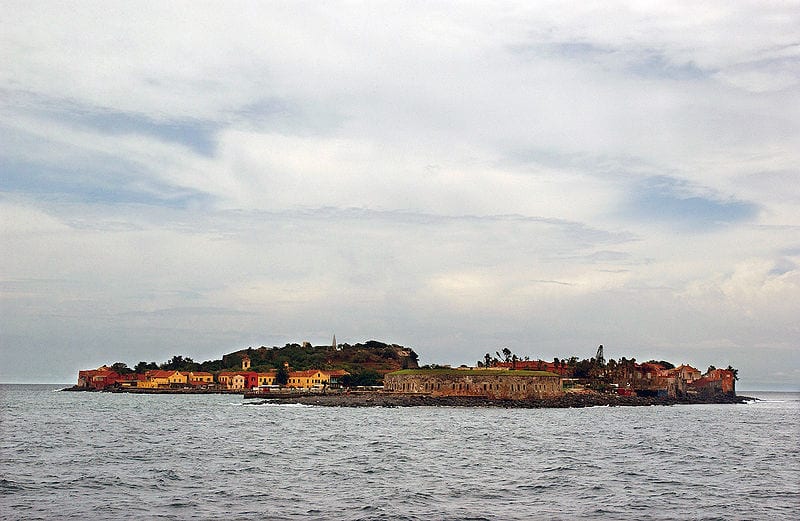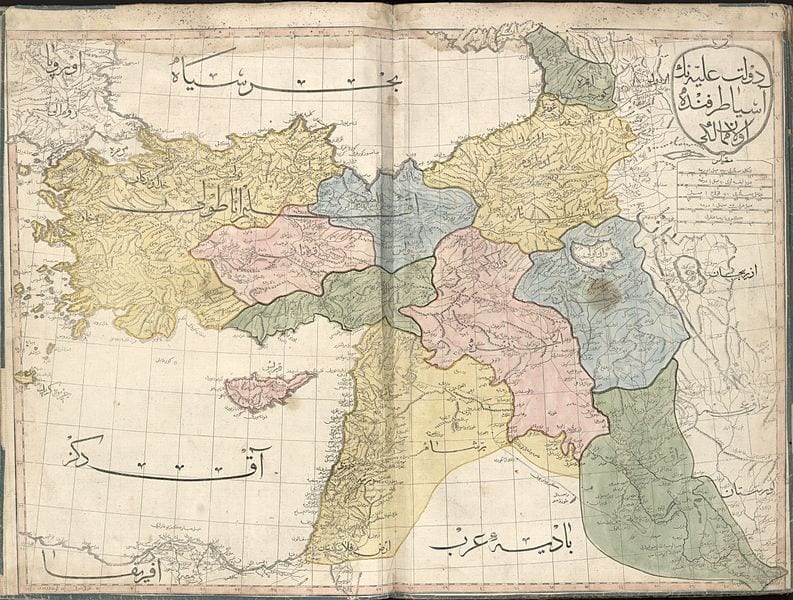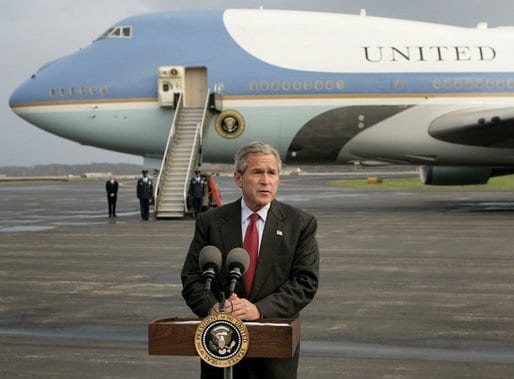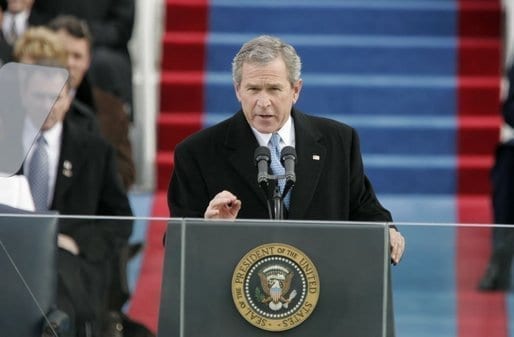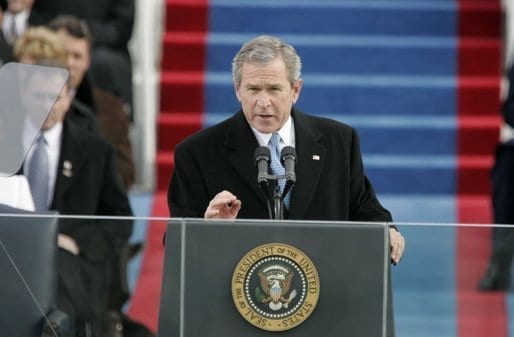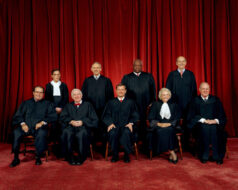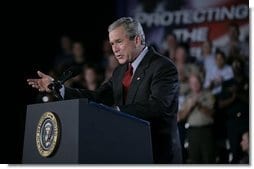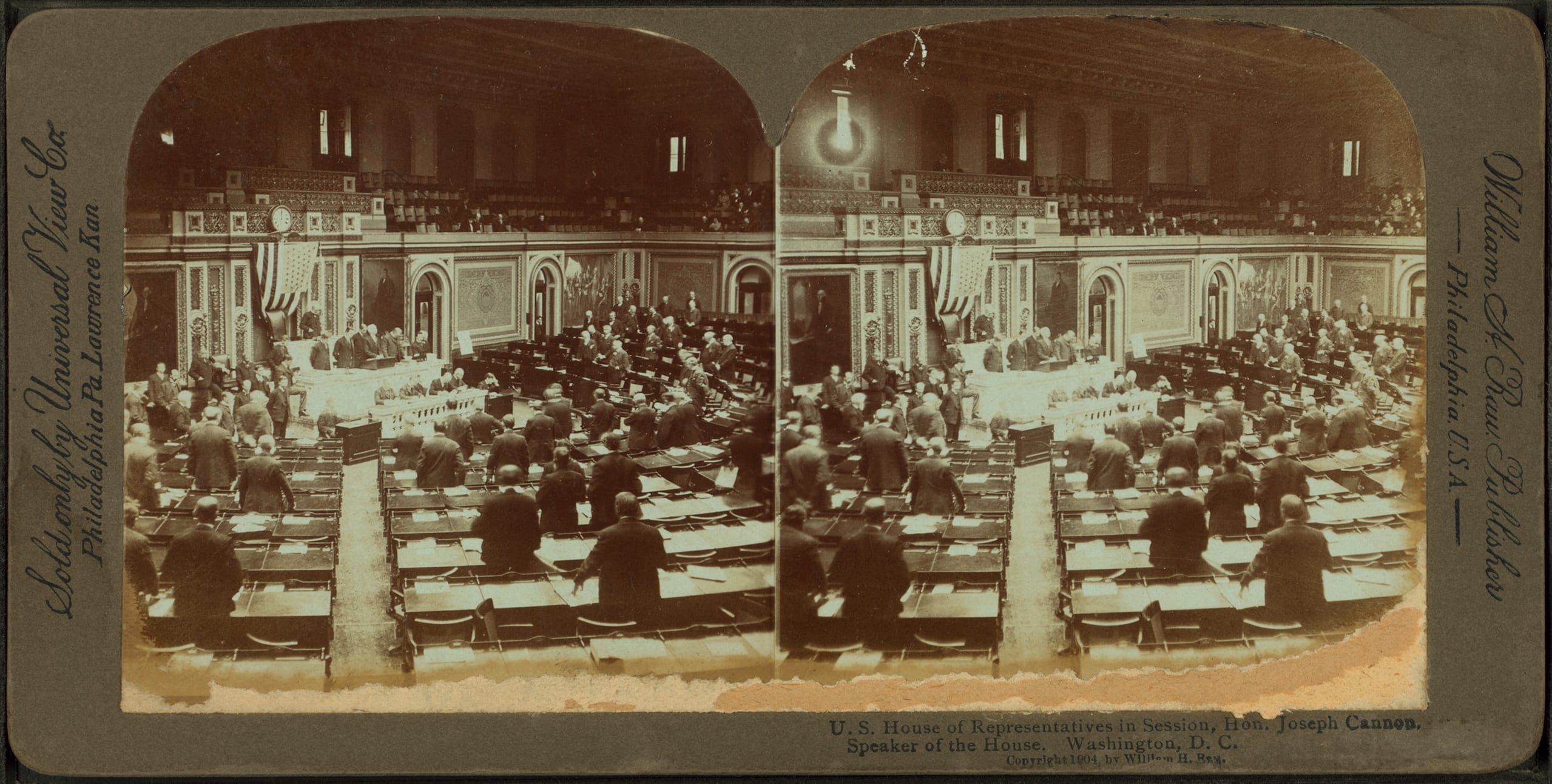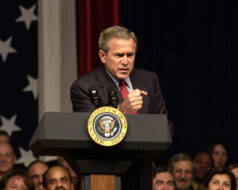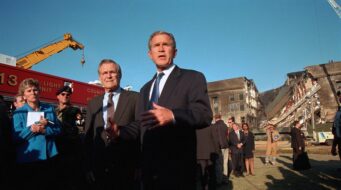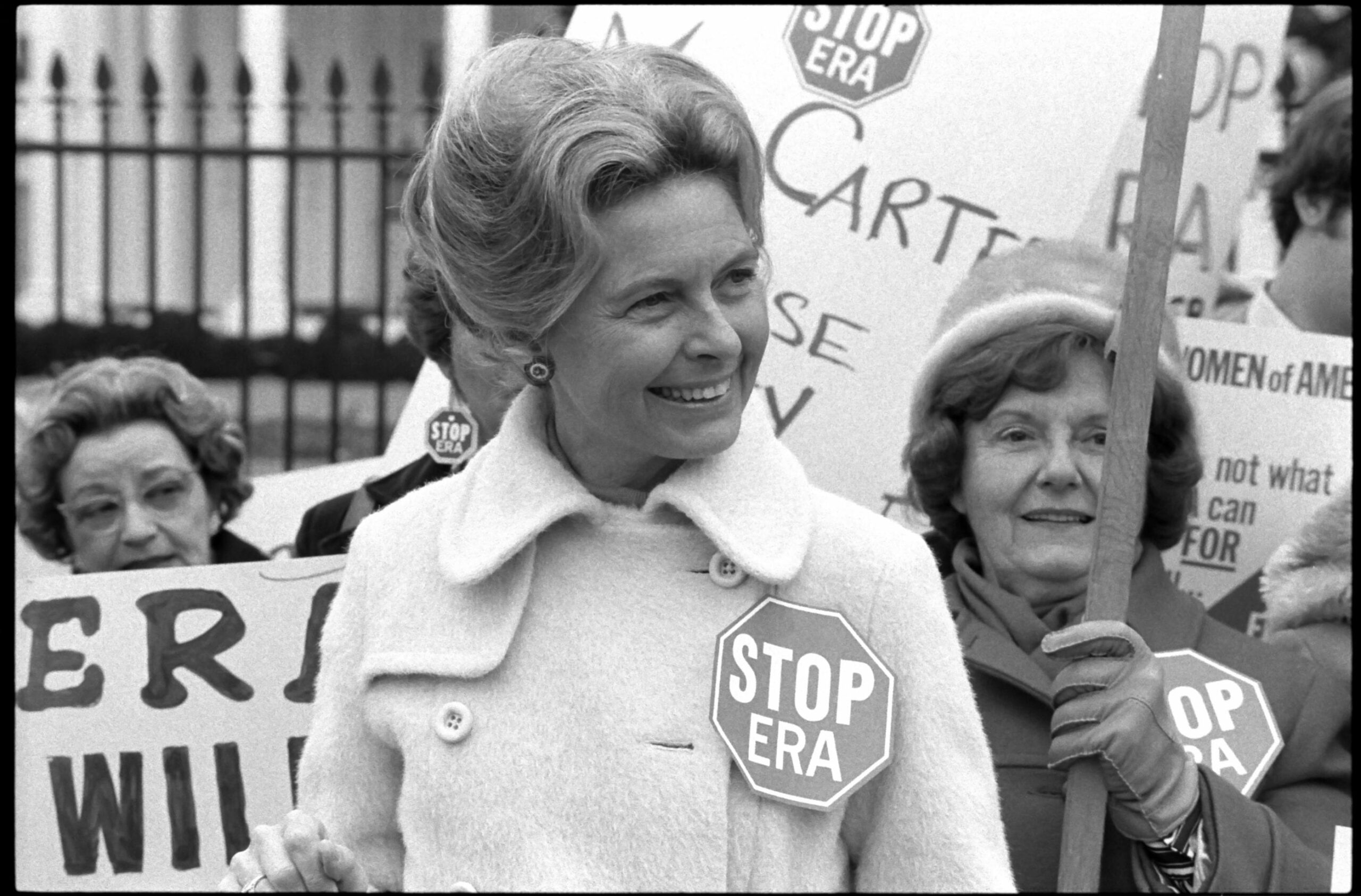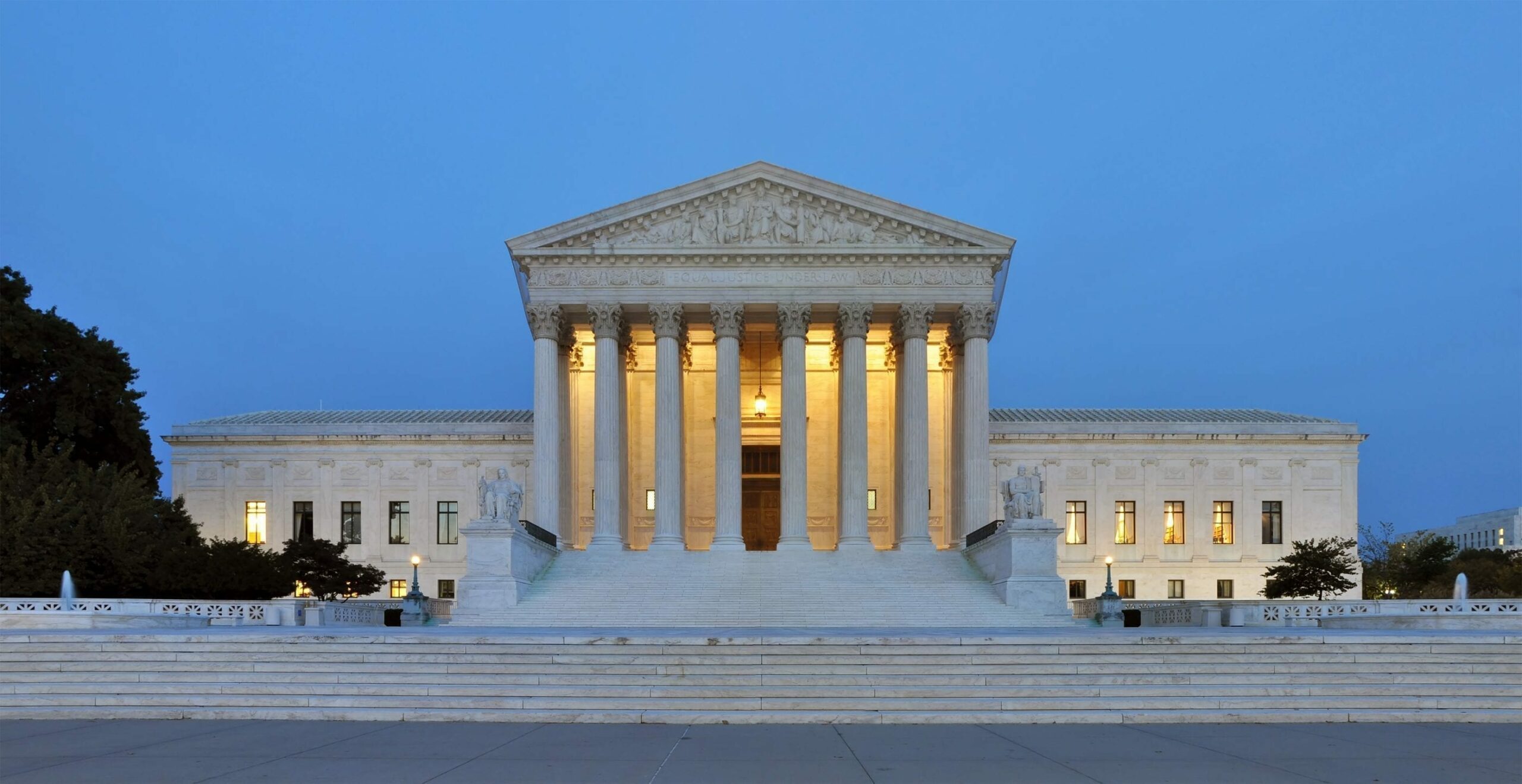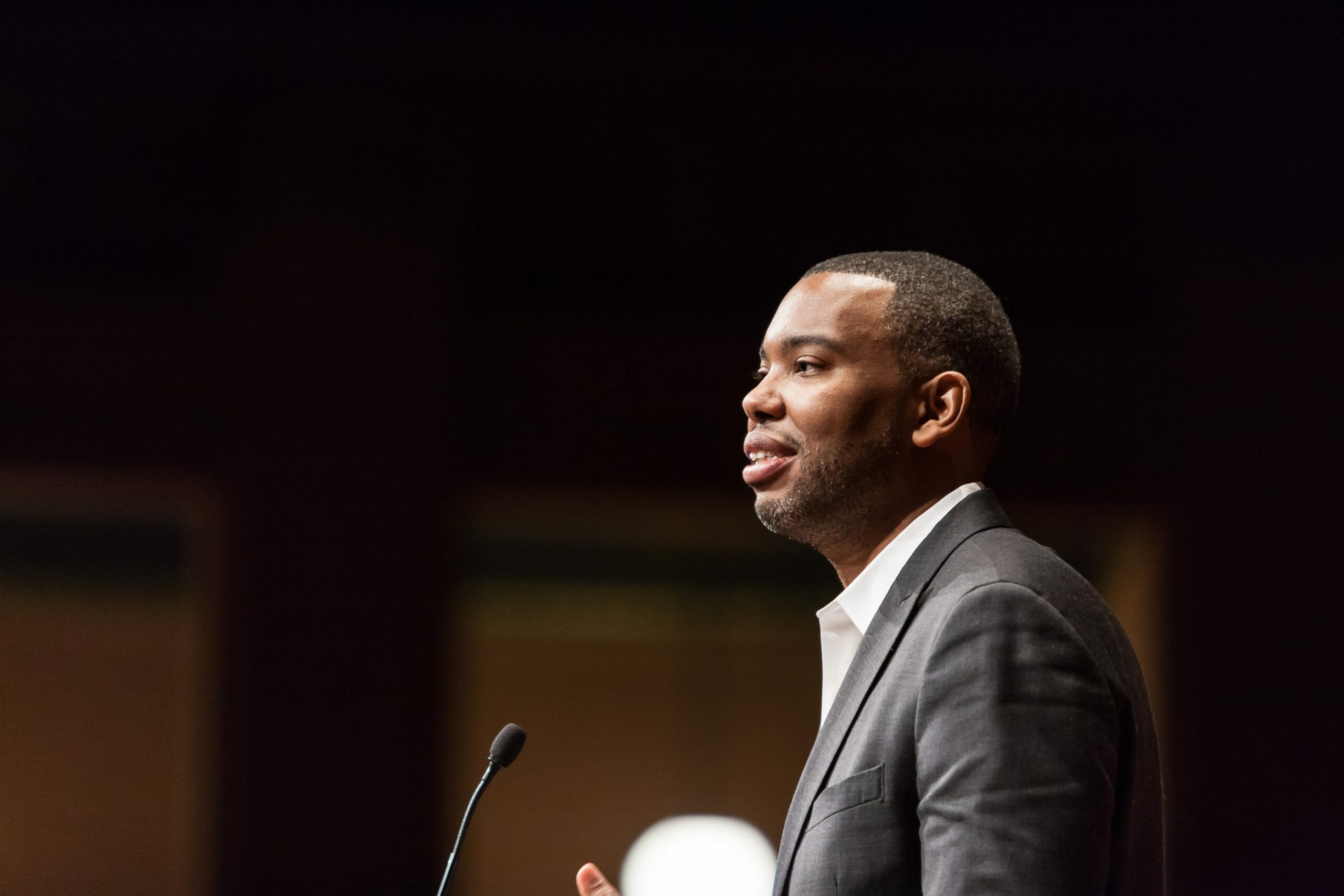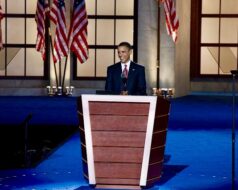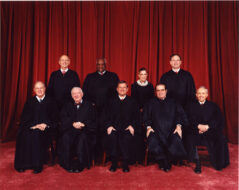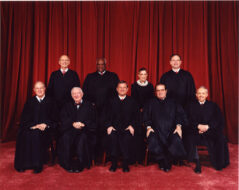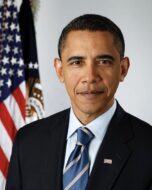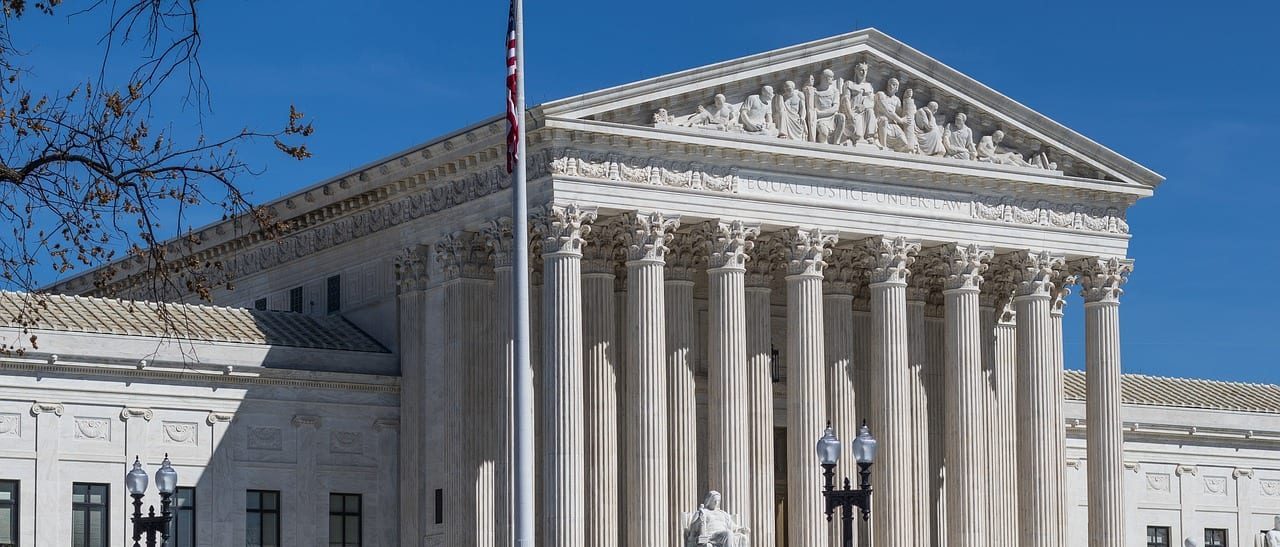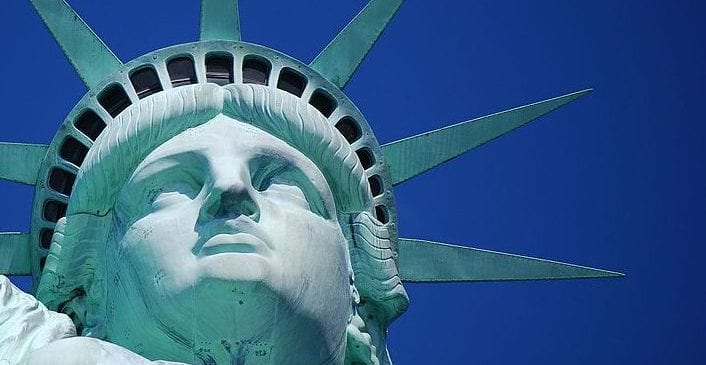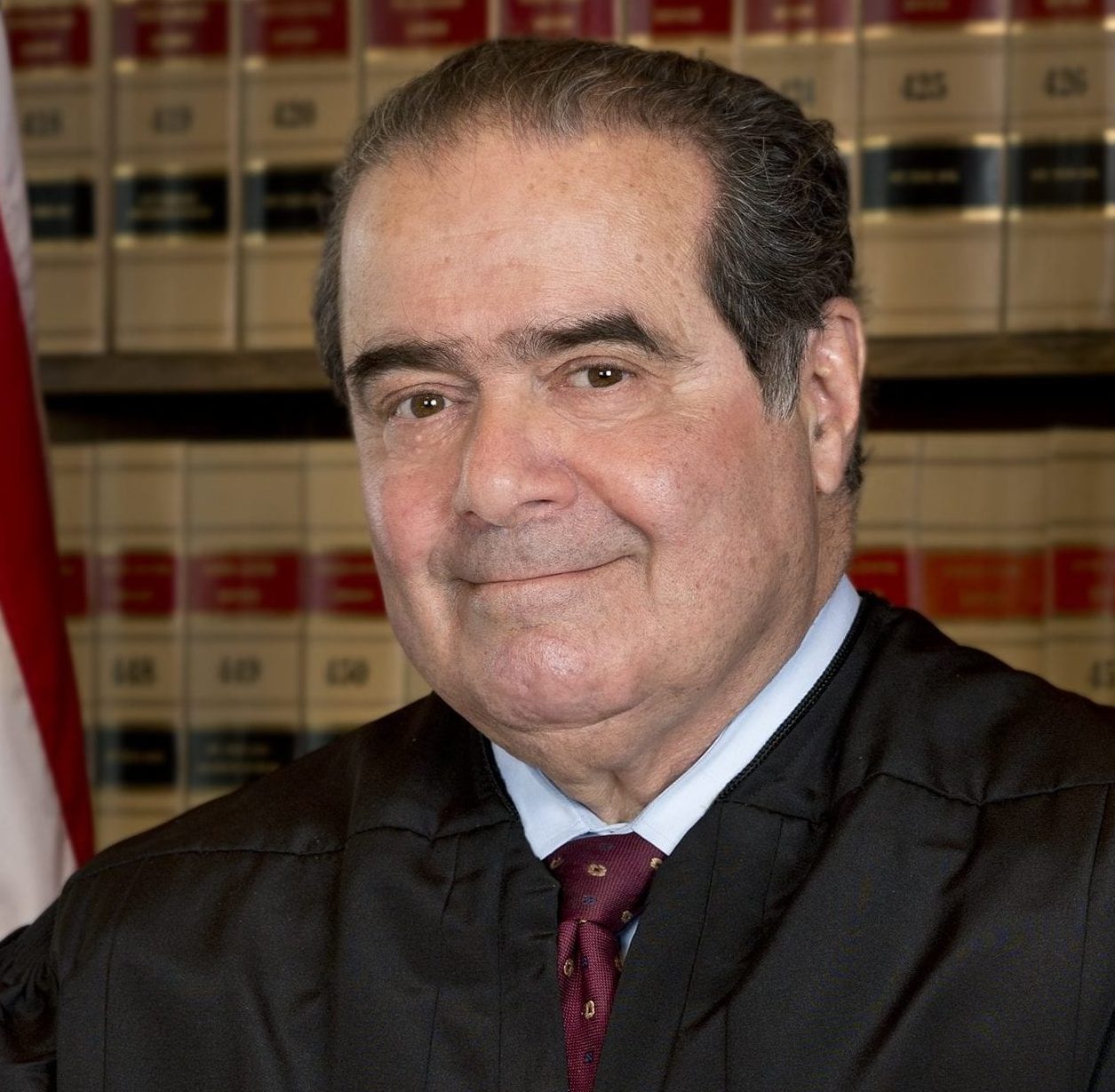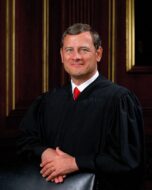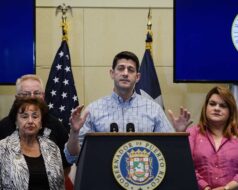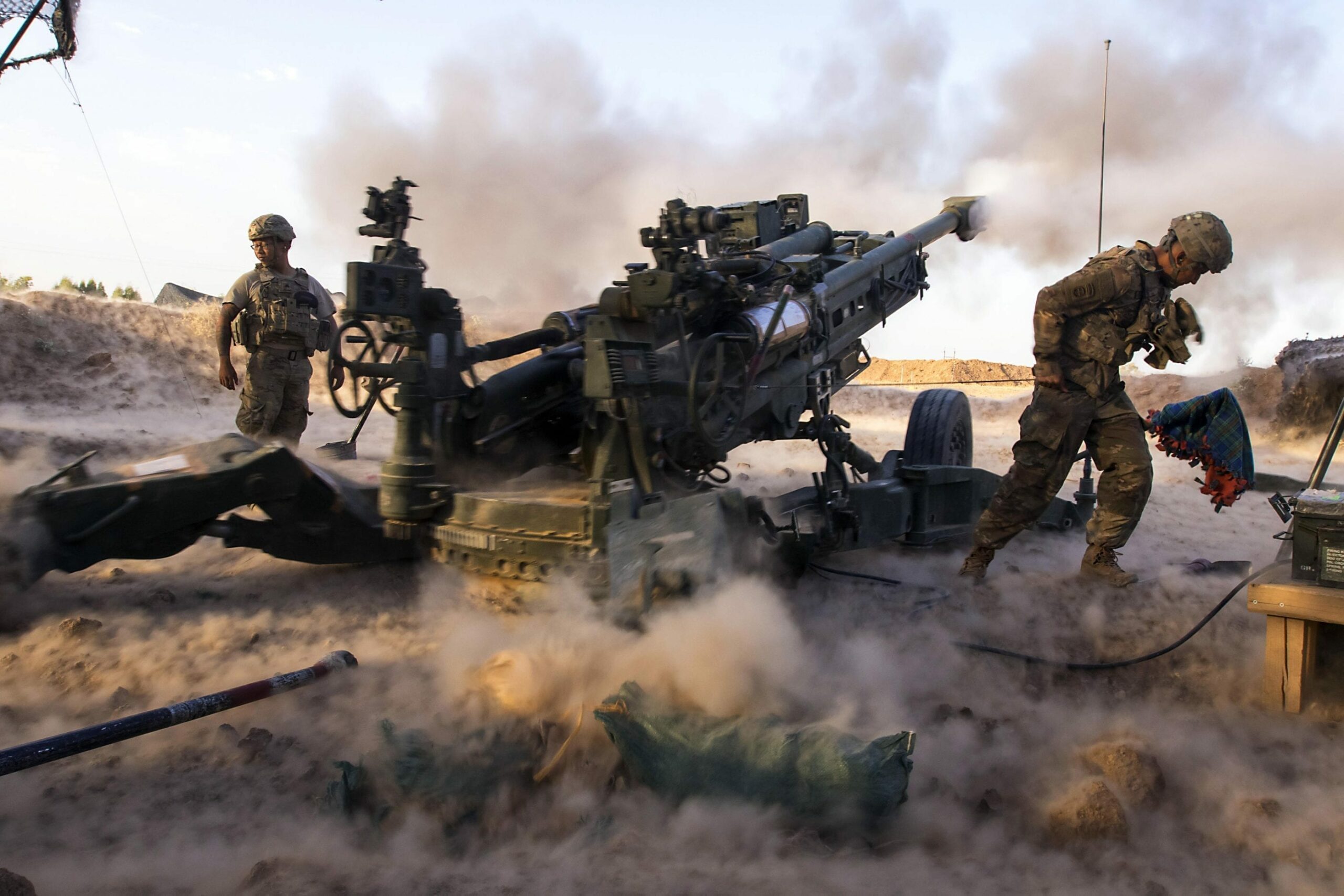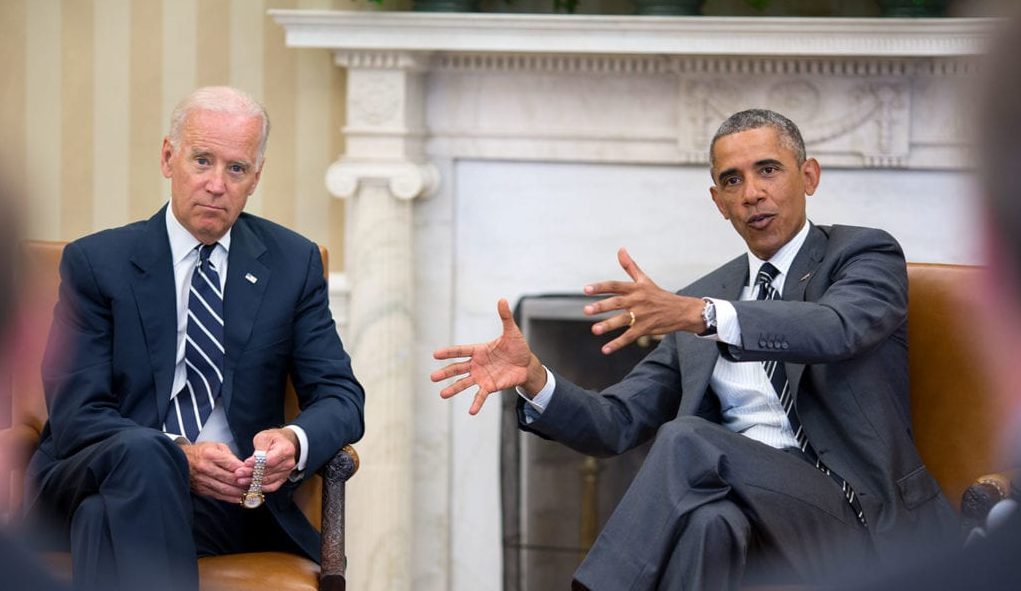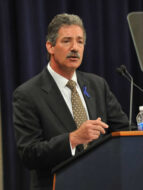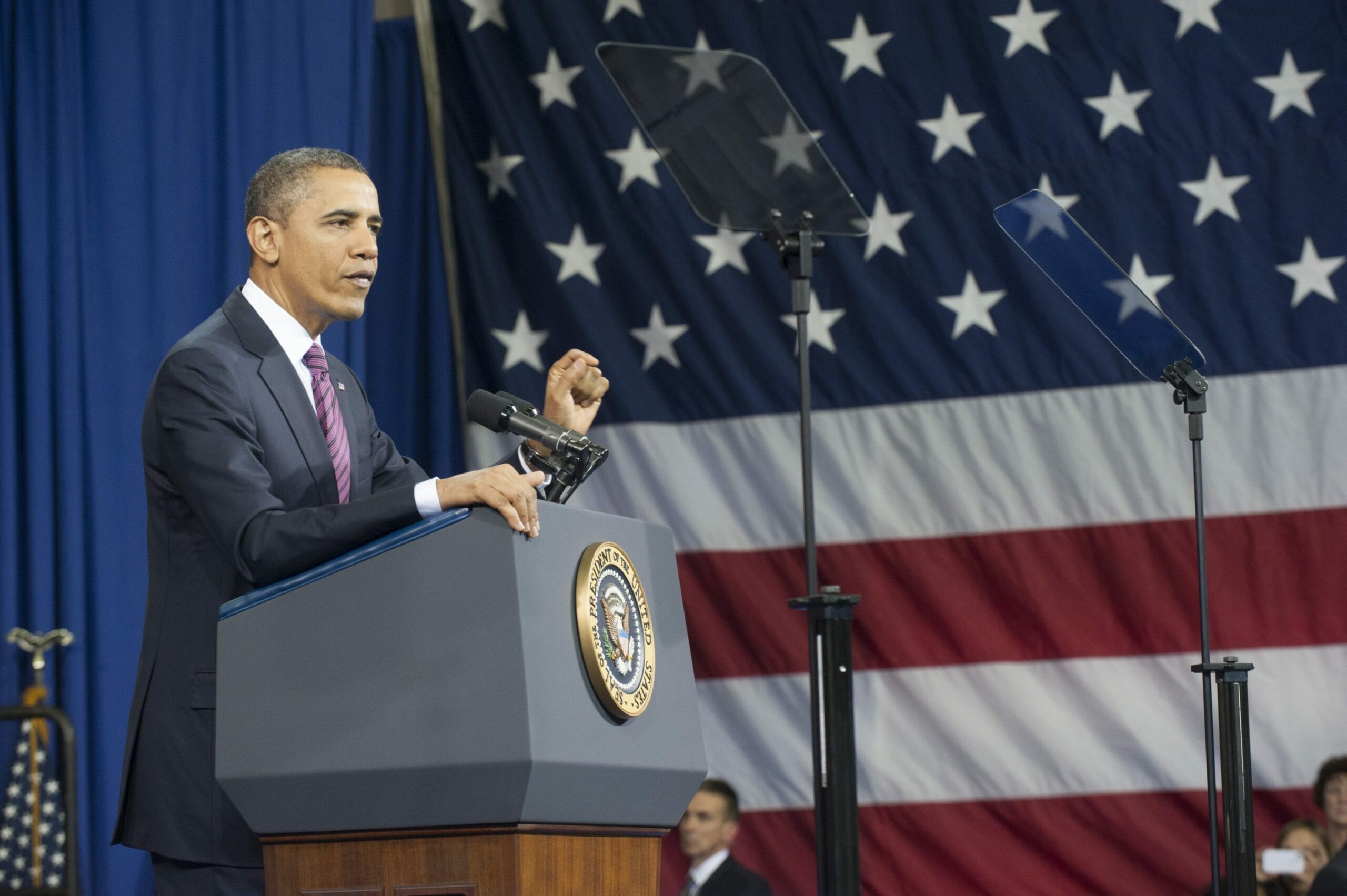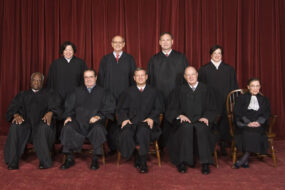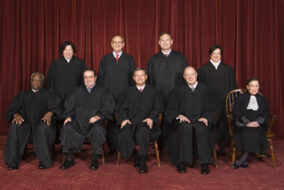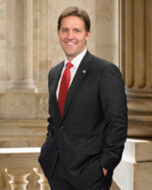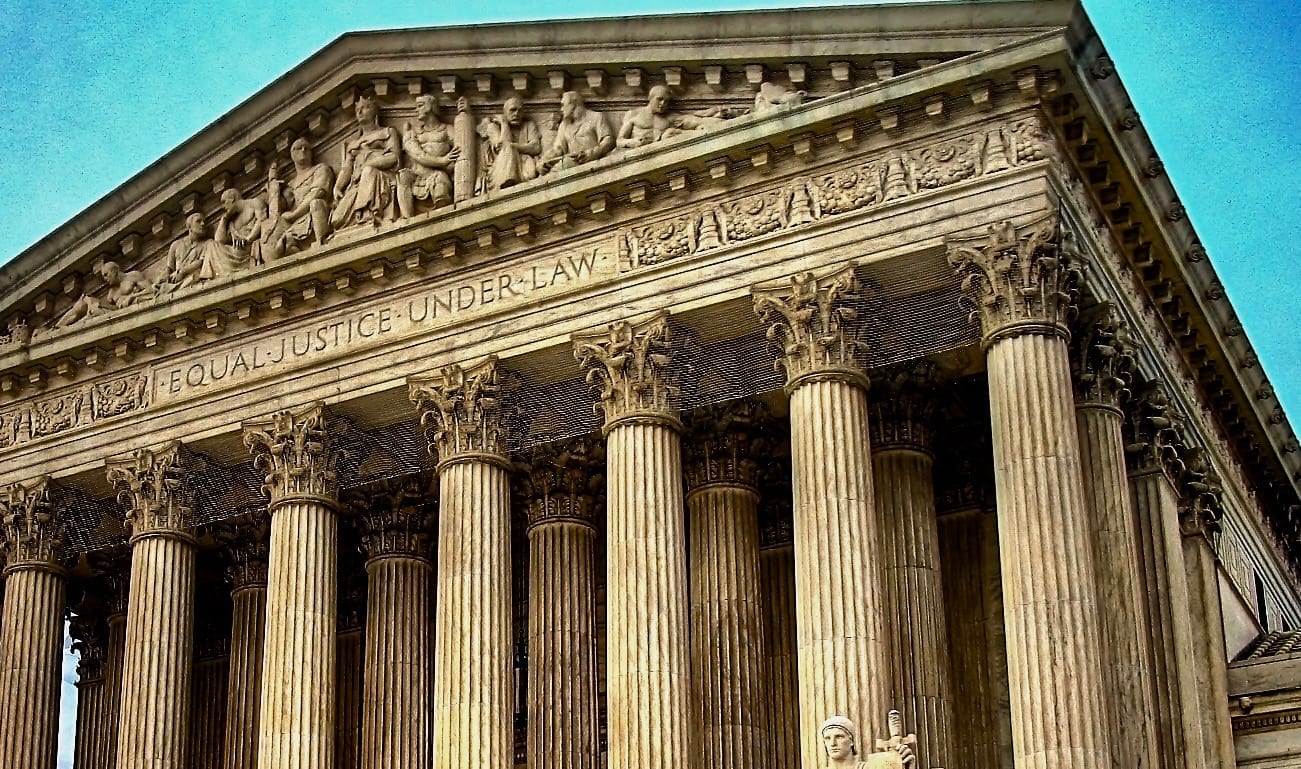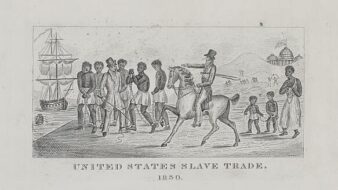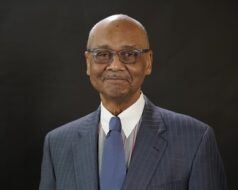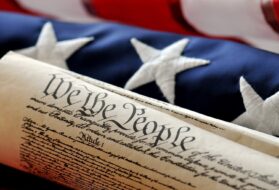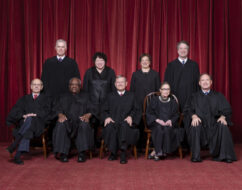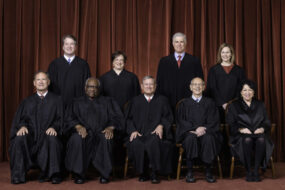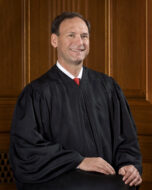

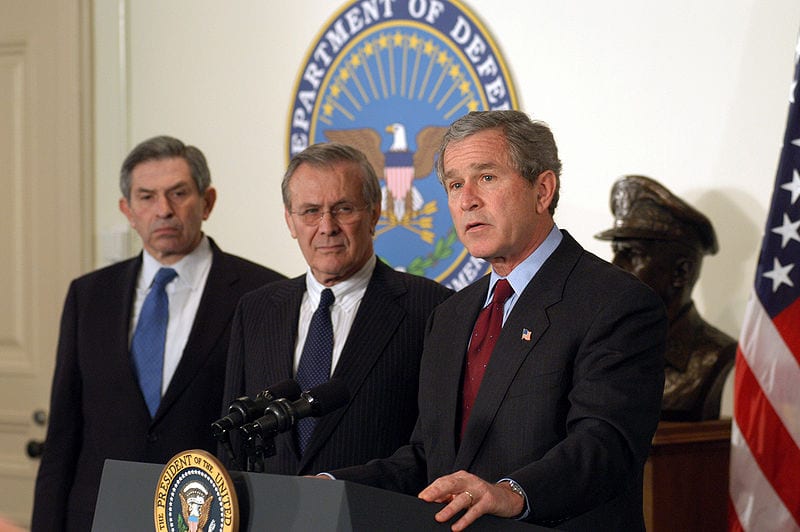
No related resources
Introduction
After the terrorist attacks on September 11, 2001, George W. Bush asked the Office of Legal Counsel (OLC) to provide a legal opinion on the scope of his authority to respond to international terrorists who were not state actors. In this opinion, OLC attorney John Yoo puts forth a sweeping interpretation of the text and history of the Constitution that would lodge the war power firmly in the hands of the president. In particular, Yoo argues that Congress’s power to declare war should not be read as the power to authorize war. In this, he goes beyond even Alexander Hamilton (Helvidius-Pacificus Debate (1793)). It also important to note that Congress in 2001 did pass an Authorization for the Use of Military Force for the president to respond to the attacks of September 11th. The scope of this AUMF would be a subject of controversy in the Supreme Court cases leading up to Boumediene v. Bush (Boumediene v. Bush (2008)).
Editors note: For the sake of readability, Yoo’s in-text references have been relocated to footnotes, and Yoo’s extensive footnotes have been deleted. For the sake of consistency, the substance of the references have not been changed. Readers who wish to learn more about the court cases Yoo cites should refer to www.oyez.org.
Source: Nathan A. Forrester, ed., Opinions of the Legal Counsel of the United States Department of Justice. Volume 25 (Washington, D.C.: United States Government Printing Office, 2012), 188–96.
MEMORANDUM OPINION FOR
THE DEPUTY COUNSEL TO THE PRESIDENT
You have asked for our opinion as to the scope of the President’s authority to take military action in response to the terrorist attacks on the United States on September 11, 2001. We conclude that the President has broad constitutional power to use military force. Congress has acknowledged this inherent executive power in both the War Powers Resolution, Pub. L. No. 93-148, 87 Stat. 555 (1973), codified at 50 U.S.C. §§ 1541-5148 (the “WPR”), and in the Joint Resolution passed by Congress on September 14, 2001, Pub. L. No. 107-40, 115 Stat. 224 (2001). Further, the President has the constitutional power not only to retaliate against any person, organization, or state suspected of involvement in terrorist attacks on the United States, but also against foreign states suspected of harboring or supporting such organizations. Finally, the President may deploy military force preemptively against terrorist organizations or the states that harbor or support them, whether or not they can be linked to the specific terrorist incidents of September 11.
Our analysis falls into four parts. First, we examine the Constitution’s text and structure. We conclude that the Constitution vests the President with the plenary authority, as Commander in Chief and the sole organ of the Nation in its foreign relations, to use military force abroad–especially in response to grave national emergencies created by sudden, unforeseen attacks on the people and territory of the United States. Second, we confirm that conclusion by reviewing the executive and judicial statements and decisions interpreting the Constitution and the President’s powers under it. Third, we analyze the relevant practice of the United States, including recent history, that supports the view that the President has the authority to deploy military force in response to emergency conditions such as those created by the September 11, 2001 terrorist attacks. Finally, we discuss congressional enactments that, in our view, acknowledge the President’s plenary authority to use force to respond to the terrorist attack on the United States.
I.
The President’s constitutional power to defend the United States and the lives of its people must be understood in light of the Founders’ express intention to create a federal government “clothed with all the powers requisite to [the] complete execution of its trust.” Foremost among the objectives committed to that trust by the Constitution is the security of the Nation. As Hamilton explained in arguing for the Constitution’s adoption, because “the circumstances which may affect the public safety are [not] reducible within certain determinate limits, . . . it must be admitted, as a necessary consequence that there can be no limitation of that authority which is to provide for the defense and protection of the community in any matter essential to its efficiency.”[1]
“It is ‘obvious and unarguable’ that no government interest is more compelling than the security of the Nation.”[2] Within the limits that the Constitution itself imposes, the scope and distribution of the powers to protect national security must be construed to authorize the most efficacious defense of the Nation and its interests in accordance “with the realistic purposes of the entire instrument.”[3] Nor is the authority to protect national security limited to actions necessary for “victories in the field.”[4] The authority over national security “carries with it the inherent power to guard against the immediate renewal of the conflict.”[5]
We now turn to the more precise question of the President’s inherent constitutional powers to use military force.
Constitutional Text. The text, structure and history of the Constitution establish that the Founders entrusted the President with the primary responsibility, and therefore the power, to use military force in situations of emergency. Article II, Section 2 states that the “President shall be Commander in Chief of the Army and Navy of the United States, and of the Militia of the several States, when called into the actual Service of the United States.”[6] He is further vested with all of “the executive Power” and the duty to execute the laws.[7] These powers give the President broad constitutional authority to use military force in response to threats to the national security and foreign policy of the United States. During the period leading up to the Constitution’s ratification, the power to initiate hostilities and to control the escalation of conflict had been long understood to rest in the hands of the Executive Branch.
By their terms, these provisions vest full control of the military forces of the United States in the President. The power of the President is at its zenith under the Constitution when the President is directing military operations of the armed forces because the power of Commander in Chief is assigned solely to the President. It has long been the view of this Office that the Commander-in-Chief Clause is a substantive grant of authority to the President and that the scope of the President’s authority to commit the armed forces to combat is very broad.[8] The President’s complete discretion in exercising the Commander-in-Chief power has also been recognized by the courts. In the Prize Cases, for example, the Court explained that, whether the President “in fulfilling his duties as Commander-in-Chief” had met with a situation justifying treating the southern States as belligerents and instituting a blockade, was a question “to be decided by him” and which the Court could not question, but must leave to “the political department of the Government to which this power was entrusted.”[9]
Some commentators have read the constitutional text differently. They argue that the vesting of the power to declare war gives Congress the sole authority to decide whether to make war. This view misreads the constitutional text and misunderstands the nature of a declaration of war. Declaring war is not tantamount to making war – indeed, the Constitutional Convention specifically amended the working draft of the Constitution that had given Congress . . . the power to “make” war. When it took up this clause on August 17, 1787, the Convention voted to change the clause from “make” to “declare.”[10] A supporter of the change argued that it would “leav[e] to the Executive the power to repel sudden attacks.”[11] Further, other elements of the Constitution describe “engaging” in war, which demonstrates that the Framers understood making and engaging in war to be broader than simply “declaring” war..[12] A state constitution at the time of the ratification included provisions that prohibited the governor from “making” war without legislative approval.[13] If the Framers had wanted to require congressional consent before the initiation of military hostilities, they knew how to write such provisions.
Finally, the Framing generation well understood that declarations of war were obsolete. Not all forms of hostilities rose to the level of a declared war: during the seventeenth and eighteenth centuries, Great Britain and colonial America waged numerous conflicts against other states without an official declaration of war. As Alexander Hamilton observed during the ratification, “the ceremony of a formal denunciation of war has of late fallen into disuse.”[14] Instead of serving as an authorization to begin hostilities, a declaration of war was only necessary to “perfect” a conflict under international law. A declaration served to fully transform the international legal relationship between two states from one of peace to one of war.[15] Given this context, it is clear that Congress’s power to declare war does not constrain the President’s independent and plenary constitutional authority over the use of military force.
Constitutional Structure. Our reading of the text is reinforced by analysis of the constitutional structure. First, it is clear that the Constitution secures all federal executive power in the President to ensure a unity in purpose and energy in action. “Decision, activity, secrecy, and dispatch will generally characterize the proceedings of one man in a much more eminent degree than the proceedings of any greater number.”[16] The centralization of authority in the President alone is particularly crucial in matters of national defense, war, and foreign policy choices, where a unitary executive can evaluate threats, consider policy choices, and mobilize national resources with a speed and energy that is far superior to any other branch. As Hamilton noted, “Energy in the executive is a leading character in the definition of good government. It is essential to the protection of the community against foreign attacks.”[17] This is no less true in war. “Of all the cares or concerns of government, the direction of war most peculiarly demands those qualities which distinguish the exercise of power by a single hand.”[18]
Second, the Constitution makes clear that the process used for conducting military hostilities is different from other government decision-making. In the area of domestic legislation, the Constitution creates a detailed, finely wrought procedure in which Congress plays the central role. In foreign affairs, however, the Constitution does not establish a mandatory, detailed, Congress-driven procedure for taking action. Rather, the Constitution vests the two branches with different powers – the President as Commander in Chief, Congress with control over funding and declaring war – without requiring that they follow a specific process in making war. By establishing this framework, the Framers expected that the process for warmaking would be far more flexible, and capable of quicker, more decisive action, than the legislative process. Thus, the President may use his Commander-in-Chief and executive power to use military force to protect the Nation, subject to congressional appropriations and control over domestic legislation.
Third, the constitutional structure requires that any ambiguities in the allocation of a power that is executive in nature – such as the power to conduct military hostilities – must be resolved in favor of the Executive Branch. Article II, Section I provides that “[t]he executive power shall be vested in a President of the United States.”[19] By contrast, Article I’s Vesting Clause gives Congress only the powers “herein granted.”[20] This difference in language indicates that Congress’s legislative powers are limited to the list enumerated in Article I, Section 8, while the President’s powers include inherent executive powers that are unenumerated in the Constitution. To be sure, Article II lists specifically enumerated powers in addition to the Vesting Clause, and some have argued that this limits the “executive power” granted in the Vesting Clause to the powers on that list. But the purpose of the enumeration of executive powers in Article II was not to define and cabin the grant in the Vesting Clause. Rather, the Framers unbundled some plenary powers that had traditionally been regarded as “executive,” assigning elements of those powers to Congress in Article I, while expressly reserving other elements as enumerated executive powers in Article II. So, for example, the King’s traditional power to declare war was given to Congress under Article I, while the Commander-in-Chief authority was expressly reserved to the President in Article II. Further, the Framers altered other plenary powers of the King such as treaties and appointments, assigning the Senate a share in them in Article II itself. Thus, the enumeration in Article II marks the points at which several traditional executive powers were diluted or reallocated. Any other unenumerated executive powers, however, were conveyed to the President by the Vesting Clause.
There can be little doubt that the decision to deploy military force is “executive” in nature, and was traditionally so regarded. It calls for action and energy in execution, rather than the deliberate formulation of rules to govern the conduct of private individuals. Moreover, the Framers understood it to be an attribute of the executive. “The direction of war implies the direction of the common strength,” wrote Alexander Hamilton, “and the power of directing and employing the common strength forms a usual and essential part in the definition of the executive authority.”[21] As a result, to the extent that the constitutional text does not explicitly allocate the power to initiate military hostilities to a particular branch, the Vesting Clause provides that it remain among the President’s unenumerated powers.
Fourth, depriving the President of the power to decide when to use military force would disrupt the basic constitutional framework of foreign relations. From the very beginnings of the Republic, the vesting of the executive, Commander-in-Chief, and treaty powers in the Executive Branch has been understood to grant the President plenary control over the conduct of foreign relations. As Secretary of State Thomas Jefferson observed during the first Washington Administration, “[t]he constitution has divided the powers of government into three branches [and] has declared that the executive power shall be vested in the president, submitting only special articles of it to a negative by the senate.”[22] Due to this structure, Jefferson continued, “[t]he transaction of business with foreign nations is executive altogether; it belongs, then, to the head of that department, except as to such portions of it as are specially submitted to the senate. Exceptions are to be construed strictly.”[23] In defending President Washington’s authority to issue the Neutrality Proclamation, Alexander Hamilton came to the same interpretation of the President’s foreign affairs powers. According to Hamilton, Article II “ought . . . to be considered as intended . . . to specify and regulate the principal articles implied in the definition of Executive Power; leaving the rest to flow from the general grant of that power.”[24] As future Chief Justice John Marshall famously declared a few years later, “The President is the sole organ of the nation in its external relations, and its sole representative with foreign nations . . . . The [executive] department . . . is entrusted with the whole foreign intercourse of the nation . . . .”[25] Given the agreement of Jefferson, Hamilton, and Marshall, it has not been difficult for the Executive Branch consistently to assert the President’s plenary authority in foreign affairs ever since.
On the relatively few occasions where it has addressed foreign affairs, the Supreme Court has agreed with the Executive Branch’s consistent interpretation. Conducting foreign affairs and protecting the national security are, as the Supreme Court has observed, “‘central’ Presidential domains.”[26] The President’s constitutional primacy flows from both his unique position in the constitutional structure, and from the specific grants of authority in Article II that make the President both the Chief Executive of the Nation and the Commander in Chief.[27] Due to the President’s constitutionally superior position, the Supreme Court has consistently “recognized ‘the generally accepted view that foreign policy [is] the province and responsibility of the Executive.’”[28] “The Founders in their wisdom made [the President] not only the Commander-in-Chief but also the guiding organ in the conduct of our foreign affairs,” possessing “vast powers in relation to the outside world.”[29] This foreign affairs power is exclusive: it is “the very delicate, plenary and exclusive power of the President as sole organ of the federal government in the field of international relations – a power which does not require as a basis for its exercise an act of Congress.”[30]
Conducting military hostilities is a central tool for the exercise of the President’s plenary control over the conduct of foreign policy. There can be no doubt that the use of force protects the Nation’s security and helps it achieve its foreign policy goals. Construing the Constitution to grant such power to another branch could prevent the President from exercising his core constitutional responsibilities in foreign affairs. Even in the cases in which the Supreme Court has limited executive authority, it is also emphasized that we should not construe legislative prerogatives to prevent the Executive Branch “from accomplishing its constitutionally assigned functions.”[31]
- 1. The Federalist No. 23, at [121–]122 (Alexander Hamilton) (Charles R. Kesler ed., 1999).
- 2. Haig v. Agee, 453 U.S. 280, 307 (1981) (citation omitted).
- 3. Lichter v. United States, 334 U.S. 742, 782 (1948).
- 4. Application of Yamashita, 327 U.S. 1, 12 (1946).
- 5. Id.
- 6. U.S. Const. art. II, § 2, cl. 1.
- 7. U.S. Const. art. II, § 1.
- 8. See, e.g., Memorandum for Charles W. Colson, Special Counsel to the President, from William H. Rehnquist, Assistant Attorney General, Office of Legal Counsel, Re: The President and the War Power: South Vietnam and the Cambodian Sanctuaries (May 22, 1970) (the “Rehnquist Memo”).
- 9. 67 U.S. (2 Black) 635, 670 (1862) Ditto the above. [Editors Note: Yoo inserts a footnote to briefly explain the situations captured by those memo and the Prize cases.]
- 10. 2 The Records of the Federal Convention of 1787, at 318-19 (Max Farrand ed., rev. ed. 1966).
- 11. Id. at 318.
- 12. See U.S. Const. Art. I, § 10, cl. 3 (“No State shall, without the Consent of Congress...engage in War, unless actually invaded, or in such imminent Danger as will not admit of delay.”)
- 13. S.C. Const. Art. XXVI (1776), reprinted in 6 The Federal and State Constitutions 3247 (Francis Newton Thorpe ed., 1909).
- 14. The Federalist No. 25, at 165 (Alexander Hamilton) (Clinton Rossiter ed., 1961).
- 15. See I William Blackstone, Commentaries 249-50.
- 16. The Federalist No. 70, at 424 (Alexander Hamilton) (Clinton Rossiter ed., 1961).
- 17. Id. at 423.
- 18. Id. No. 74, at 447 (Alexander Hamilton).
- 19. U.S. Const. art. II, § 1.
- 20. Id. art. I, § 1.
- 21. The Federalist No. 74, at 447 (Alexander Hamilton) (Clinton Rossiter ed., 1961).
- 22. Thomas Jefferson, Opinion on the Powers of the Senate (1790), reprinted in 5 The Writings of Thomas Jefferson at 161 (Paul L. Ford ed., 1895).
- 23. Id.
- 24. Alexander Hamilton, Pacificus No. I (1793), reprinted in 15 The Papers of Alexander Hamilton at 33, 39 (Harold C. Syrett et al. eds., 1969).
- 25. 10 Annals of Cong. 613-14 (1800).
- 26. Harlow v. Fitzgerald, 457 U.S. 800, 812 n.19 (1982).
- 27. See Nixon v. Fitzgerald, 457 U.S. 731, 749-50 (1982).
- 28. Dept of Navy v. Egan, 484 U.S. 518, 529 (1988) (quoting Haig v. Agge, 453 U.S. at 293-94).
- 29. Ludecke v. Watkins, 335 U.S. 160, 173 (1948).
- 30. United States v. Curtis-Wright Export Corp., 299 U.S. 304, 320 (1936).
- 31. Nixon v. Adm’r of Gen. Servs., 433 U.S. 425, 443 (1977).

Conversation-based seminars for collegial PD, one-day and multi-day seminars, graduate credit seminars (MA degree), online and in-person.
